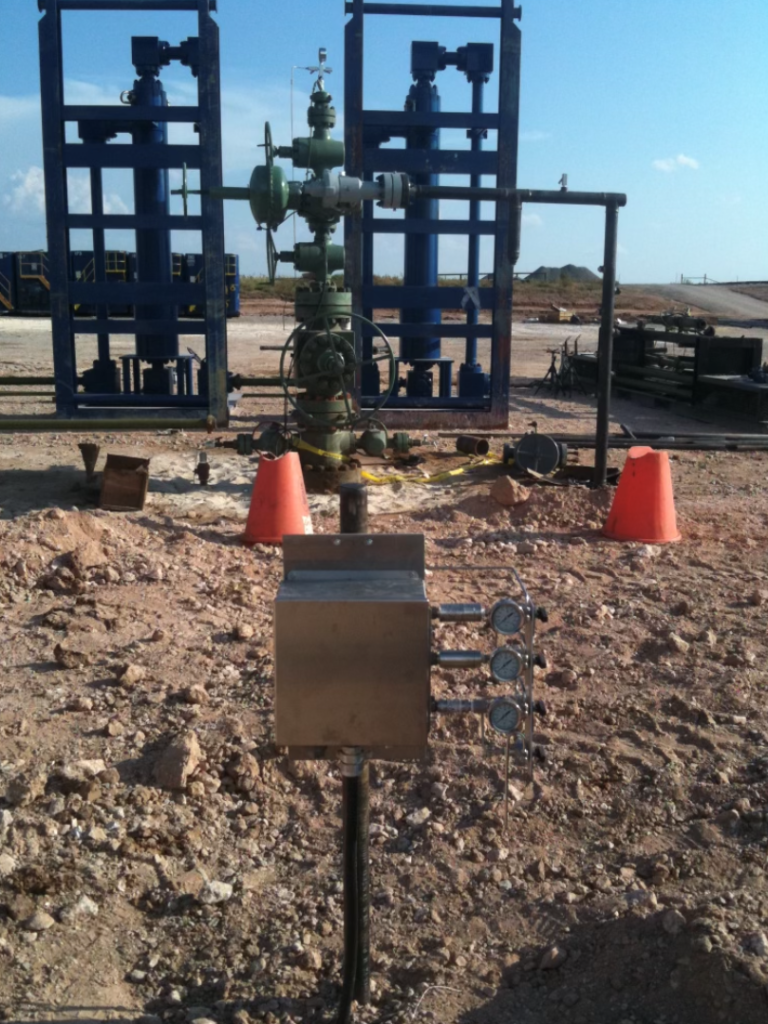
A recent Texas Supreme Court case, BlueStone Natural Resources II, LLC v. Randle, addressed a dispute over postproduction cost allocation for royalties. I thought this Opinion offered a good explanation of postproduction costs generally, and comparison of the two clauses at issue in the leases, which made it worth taking a look at on this blog. [Read Opinion here.]

Background
In 2003, several mineral owners (“lessors”) executed oil and gas leases with Quicksilver Resources. Each of the leases contain a 2-page Printed Lease and an attached Addendum. The Addendum states that its language “supersedes any provisions to the contrary in the Printed Lease.” The two documents differ in their language with regard to royalty calculation under the lease.
The Printed Lease requires that royalties be paid on the “market value at the well…or the gas so sold or used off the premises.” It requires royalties to be “computed at the mouth of the well.” The Addendum provides that “the lessee agrees to computer and pay royalties on the gross value received, including any reimbursements for severance taxes and production related costs.” The Addendum also includes what the Court referred to as “typical no deductions language” providing that “royalties accruing under this lease shall be without deduction for postproduction costs. Not surprisingly, this inconsistency led to a dispute over whether royalties under the lease should be paid on the gross value received or the value received less postproduction costs.
The Printed Lease also requires payment for gas “sold or used off the premises or for the extraction of gasoline or other product therefrom,” subject to the following exception: “Lessee shall have free from royalty or other payment the use of…gas…produced from said land in all operations which Lessee may conduct hereunder, including water injections and secondary recovery operations, and the royalty on…gas…shall be computed after deducting any so used.”
Dispute
For over 10 years, Quicksilver paid gas royalties on the gross value received, without deducting postproduction costs. When BlueStone Natural Resources II, LLC acquired the lease from Quicksilver in 2016, it began deducting post production costs pursuant to the language in the Printed Lease. Royalty payments dramatically declined, and four groups of mineral owners sued BlueStone. The suits were consolidated and the lessors claimed that BlueStone was improperly deducting post production costs because the lease–due to the Addendum–unambiguously requires royalties to be calculated on “gross” receipts “without deductions.” BlueStone agrees that “gross value received” in the Addendum supersedes the Printed Lease’s “market value” royalty language, but they argue that the Printed Lease mention of “at the mouth of the well” is the only lease language providing a valuation point, so nothing in the Addendum is contradictory of that portion of the Printed Lease such that it would supersede.
While this litigation was pending, the lessors discovered that BlueStone was not paying any royalties on commingled gas that was used as plant fuel by a third-party processor or on volumes the processor returns to BlueStone to fuel compressors both on and off the leased premises. BlueStone claims contractual right to “free use” of gas regardless of whether it is consumed on or off the lease, so long as the use benefits or furthers the leasehold operations.
Lower Court Rulings
The trial court found for the lessors on both issues on summary judgment motions. The judge ruled that Bluestone breached the lease by deducting postproduction costs and by failing to pay royalties on both the processor and compressor fuel.
The Ft. Worth Court of Appeals affirmed, holding that the Printed Lease “at the mouth of the well” language is contrary to the Addendum’s “gross value received” language. Given the Addendum’s language regarding any conflict, the “gross value received” language controlled. Additionally, the court of appeals found that the free use clause did not apply to off-site uses for plant or compressor fuel.
BlueStone sought review from the Texas Supreme Court.
Opinion
The Court framed the question as whether there is a conflict between the “market value at the mouth of the well” language in the Printed Lease and the “gross value received…without deduction” language in the Addendum. The parties agree if there is a conflict, it is the Addendum language that will control.
Primer on Production and Post Production Costs
The Court offered a good explanation of the difference between production and post production costs at the outset of the Opinion. Production is the process of bringing minerals to the surface. Production for raw gas occurs at the wellhead. A royalty is the lessor’s fractional share of production, and, depending on the lease terms, may be calculated at the wellhead, or at any downstream point. Gas royalties are generally free of production costs (those required to extract the raw gas from the land), but bears the post production costs (those incurred to prepare the raw gas for downstream sale). This general rule is subject to modification by the parties in an oil and gas lease.
Primer on Royalty Clauses
The Court offered a three-part construct of most royalty clauses: (i) the royalty fraction (i.e. 1/4, 1/8, etc.); (ii) the yard stick (market value, proceeds, price, etc.); and (iii) the location for measuring the yardstick (at the well, at the point of sale, etc).
BlueStone essentially argues that there is no conflict on the third point–the valuation point–because the Printed Lease states it will be “at the mouth of the well” and there is no alternate valuation in the Addendum. The lessors claim that “gross value received” essentially encompasses both parts (ii) and (iii), with received referring to proceeds obtained at the point of sale under part (iii) and “gross” meaning without deduction under part (ii).
Primer on Royalty Clauses and Post Production Costs
The Court then offered a breakdown of the two valuation methods at issue in this case.
“Market value” means “the price a willing buyer under no compulsion to buy will pay to a willing seller under no compulsion to sell.” This is not necessarily the contract price at which gas is sold, as leases may account for market fluctuations by setting a floor or ceiling to address differences in market value and contract prices. The preferred method of calculating “market value” is to use actual sales comparable in time, quality, quantity, and availability of market outlets. If this data is not available, the “net-back” method is used to estimate the wellhead value by using the proceeds of a downstream sale and subtracting postproduction costs encounter between the wellhead and the sale. Mineral leases requiring royalty calculation “at the well” mean the lessor bears its share of postproduction costs. The formula in the Printed Lease falls into this category.
“Proceeds” clauses require measurement of the royalty based on the amount the lessee actually receives for the gas under its sales contract, regardless of whether that amount is more or less than market value. “Proceeds” may either be the gross amount received, or the net amount remaining after deductions. Generally, a royalty clause based solely on the price actually received is “sufficient in itself to excuse the lessors from bearing post production costs.” However, if the clause contains modifiers, that may affect whether the lessor bears the postproduction costs. For example, if the valuation is modified by the term “net,” it does not relieve the lessor from bearing postproduction costs. Similarly, if modified by an “at the well” valuation point, such costs are likewise deductible. If proceeds are valued as “gross,” however, then the valuation point is necessarily the point of sale and the lessor is not subject to sharing in postproduction costs. The Addendum language falls into this category.
Analysis
Looking at the conflicting royalty calculation issue the Court sided with the lessors, finding that the two terms do conflict. The terms “gross proceeds” and “at the well” inherently conflict because “at the well” is a net proceeds calculation. Because the Addendum expressly requires conflicts be resolved in favor of the Addendum language, it is the “gross value received” language that governs. Therefore, BlueStone wrongfully deducted postproduction costs from the royalties due to the lessors.
Turning next to the plant and compressor fuel issue, the Court again sided with the lessors. The plain meaning of the language allows on-lease uses, but is not reasonably construed as extending to off-lease uses. Thus, the language does not allow for free use of gas off the lease premises. The Court remanded the case for further litigation on the unresolved factual issues surrounding the amount and measure of compressor fuel damages.
Why We Care?
The main reason I wanted to write a blog post on this case was that I think the Texas Supreme Court Opinion did a good job breaking down complex royalty calculation issues and walking the reader though some of the important considerations. Additionally, this case serves as a good reminder the difference that even a couple of words can make when determining how royalties will be calculated. Because of this, I always recommend mineral owners use an attorney to help negotiate and draft an oil and gas lease.
Further, the issue of postproduction costs is a frequently litigated issue of which all mineral owners should be aware. If you are interested in this topic, we have a great podcast episode with Texas oil and gas lawyer, John McFarland, focused solely on royalty calculation issues. [Listen here.]












